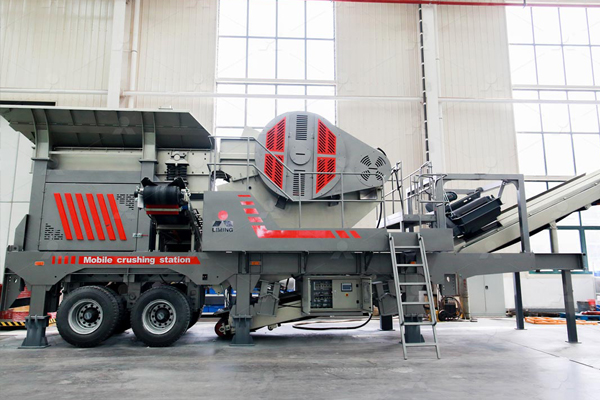When selecting a mobile crusher with a capacity of 100 tons per hour, it is crucial to evaluate various factors to ensure optimal performance, cost-effectiveness, and suitability for the specific project needs. Mobile crushers are versatile pieces of equipment, widely used in mining, construction, and quarrying operations due to their flexibility and ability to produce large quantities of high-quality aggregate on-site. Here, we’ll delve into key aspects to consider for a mobile crusher with such a capacity.

Key Features of a 100 Tons Per Hour Mobile Crusher
1. High Mobility and Compact Design: A 100-ton-per-hour mobile crusher must be designed for easy transportation and maneuverability, enabling it to be moved from one job site to another without significant delays or logistical hurdles. This flexibility is essential for projects that require operations across different locations. Compactness should not compromise power; the design should integrate seamlessly into various terrains and site conditions.
2. Efficient Crushing Mechanism: The core of a mobile crusher’s performance is its crushing mechanism. For a 100-ton-per-hour unit, the crusher should be robust and efficient enough to handle a variety of materials such as limestone, granite, basalt, and construction waste. Typical crusher types include jaw crushers, impact crushers, and cone crushers. Each type has specific advantages:
- Jaw crushers are ideal for primary crushing, handling large, hard materials.
- Impact crushers offer versatility for both primary and secondary crushing, providing excellent reduction ratios and producing finely-shaped output.
- Cone crushers excel in secondary and tertiary crushing, particularly for hard, abrasive materials.
3. Advanced Technology and Automation: To maximize productivity and reduce operational strain, the integration of modern technology is essential. Features such as automated feeder controls, real-time monitoring systems, and user-friendly touch panels can significantly enhance performance. Automated adjustments allow the crusher to adapt to varying material feed sizes and types, maintaining consistent output and minimizing downtime.
4. Durability and Maintenance Requirements: For sustained productivity, a mobile crusher should be built with durable materials that can withstand high-impact operations. Maintenance intervals should be minimal, and parts should be easily accessible for quick repairs. Crushers with self-diagnostic capabilities that alert operators to potential issues before they escalate are advantageous, as they help avoid costly unplanned downtime.
Benefits of Choosing a 100-Ton-Per-Hour Mobile Crusher
Versatility and Flexibility: Mobile crushers can be adapted to fit various applications, from mining to recycling, allowing operators to process materials at the source and reduce transportation costs. The 100-ton-per-hour capacity strikes a balance between substantial output and manageable size, making it ideal for medium-sized operations.
Reduced Operational Costs: By processing material on-site, mobile crushers can eliminate the need for transporting raw materials to a central processing facility. This not only saves on transport costs but also speeds up project timelines. Energy-efficient engines further contribute to operational savings.
Eco-Friendly Operations: Modern mobile crushers are equipped with engines that meet current emission standards, reducing the environmental impact of quarrying and mining activities. Dust suppression systems and noise-reducing technologies can also be integrated to make the equipment suitable for use in urban areas.
A 100-ton-per-hour mobile crusher is a practical solution for many mid-sized aggregate production projects. When choosing such equipment, it is vital to consider factors like mobility, crushing mechanism, technological advancements, energy efficiency, and maintenance requirements. Selecting a high-quality, reliable crusher can lead to increased productivity, cost savings, and a lower environmental footprint, making it a wise investment for operations seeking efficiency and flexibility in their material processing tasks.
